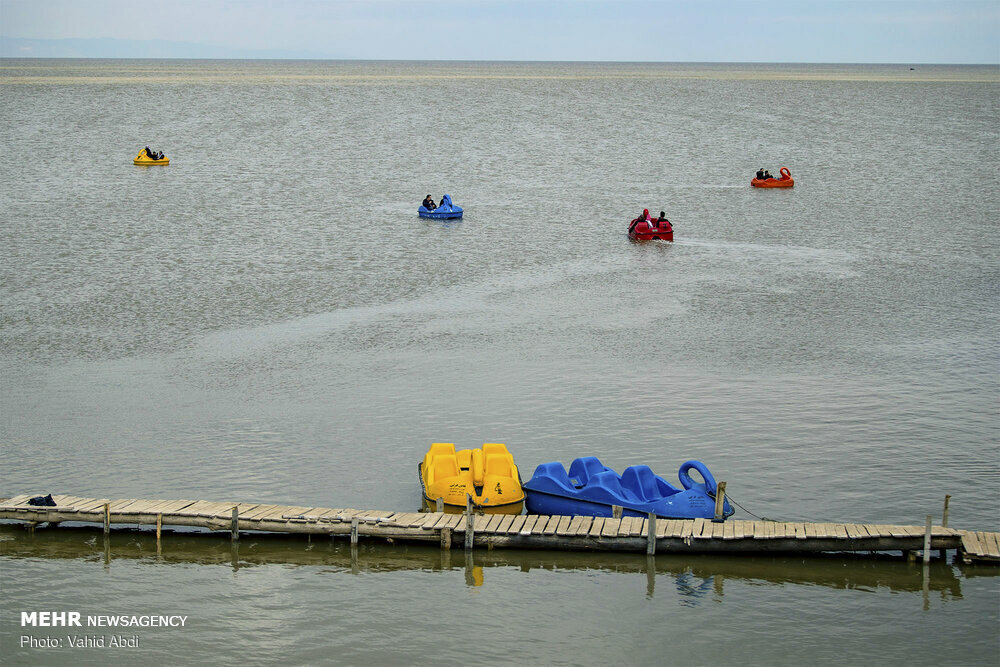Heavy rainfalls revive drying Lake Urmia

TEHRAN – Recent downpours causing flood that recently left many provinces of Iran submerged, have made the world’s second largest saltwater lake come back to life, as the water level of the northwestern Lake Urmia has raised dramatically.
In 1999 the volume of water was at 30 billion cubic meters drastically decreased to half a billion cubic meters in 2013. Moreover, the lake surface area of 5,000 square kilometers in 1997 shrunk to one tenth of that to 500 square kilometers in 2013.
Currently, due to recent heavy rainfall the volume of water in the Lake Urmia reached 3.13 billion cubic meters, while last year only 1.99 billion cubic meters of water was flowing in the lake in the same period, ISNA reported on Saturday.
The Lake’s water level is over 1,271 meters and the lake’s surface is more than 2,741 square kilometers, which demonstrates 464 square kilometer increased compared to the same period last year.
Kioomars Daneshjoo, director for the provincial water company said that water level of Lake Urmia increased by 36 centimeters in comparison to the same period of the previous year and also 81 centimeter compared to the Iranian calendar month of Mehr (September, 2018).
To restore Lake Urmia, 726 million cubic meters of dam water have been released into the lake so far, which helped the lake to return to a good condition, he added.
Alireza Shari’at, head of monitoring and supervision department of the Lake Urmia restoration program said in September 2018, that in order to maintain the Lake Urmia ecological balance of 14 billion cubic meters over the next 10 years, an annual amount of 3.3 billion cubic meters of water is required.
Director of National Drought Warning and Monitoring Center (NDWMC) Sadeq Ziaeian told the Tehran Times on Friday that since the beginning of the current water year (starting on September 23, 2018) the whole country has received 256 millimeters of precipitation on average and this is while the average precipitation the country received in the long-term amounts to 232 milliliters.
“There remain more than 5 months for the current water year to end, however, the amount of precipitations have already surpassed that of the last year,” Ziaeian highlighted.
NDWMC director went on to say that the amounts indicate a 39-percent increase compared to long-term averages and a 184-percent rise compared to the same period last year.
FB/MQ/MG
